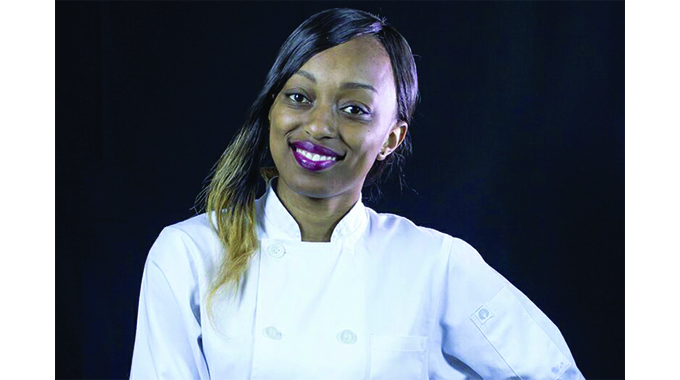
The Sunday News

Bruce Ndlovu, Sunday Life Reporter
IT has become a common sight in Bulawayo and Zimbabwe.
On Tuesdays in particular, one can spot them anywhere from the tip of the roaring Zambezi to the bustling streets of the capital. These are the long snaking queues which, in these days when Covid-19 has made sit-in dining at fast food joints a novelty. The queues snake from counters, past the entrances before wrapping themselves around city blocks.
On such days, one need not ask why people are packed in queues in a world that now shuns them. They already know that pizza is not only on the menu, but it is on special. For the price of one, they can help themselves to a bit of Italian cuisine which has skipped borders and oceans before making itself a staple on the African continent. Few in that queue could tell you how the pizza that they cradled tightly under their arm after a proud purchase was made.
Fewer still would tell you of where their Tuesday night super snack actually came from.
Sure, most know that this bit of culinary delight came from Italy. But few could tell you the actual word “pizza” was first documented in 997AD in Gaeta, Italy. Most of those kicking their heels, willing the queue to go along faster would know that the pizza was, for centuries, poor man’s food until the First World War, when American soldiers returned home, weary from home but craving a taste of the pizza they had eaten so hungrily while bullets whizzed around them.
Over a century later, the pizza is loved in the alleys of Naples as it is in the streets of Bulawayo. In fact, one is more likely to find pizza or pasta at a Zimbabwean restaurant than they are to find any traditional local dish.
It is perhaps for this exact reason that Makhosi Mahlangu, a chef and academic, found his fork gravitating towards spaghetti and other Italian dishes when he went to do his MSc in Food and Beverage Innovation and Management with the Universita Politecnica delle Marche in Ancona.

African Food Expo
“When I got to Italy, it was an eye opener. In my master’s food science class, we had half the class Africans and half the class Italians. From the African side we had people from Sudan, we had people from Cameroon and then we had Zimbabweans.
When we got there as Zimbabweans, we realised that we did not have a strong traditional food background and we were basically consuming what the Italians were eating, pizza and spaghetti. We got there and we immediately changed and became mini-Italians,” he told Sunday Life in an interview.
During those days on the Adriatic Coast, Mahlangu realised that despite the fact that nothing separated him from the Zimbabweans back home in pizza queues, the difference was he was in the midst of Italians who, while at home, were still taking pride in their own food. Pasta and pizza might have made their mark in Bulawayo but its DNA was still distinctly Italian.
“On the other hand, we realised that the people from Cameroon and Ghana were always having traditional food.
That’s when I started to learn about dishes like fufu. We would also go out with the Sudanese and their families and it would be shocking to us that they would fly stuff just to enjoy their food. I also lived with people from Pakistan who would talk about their Biryani rice, so I felt naked as a Zimbabwean. I started thinking, we do have our own food but we have never promoted it. So that’s where the whole journey began,” he said.

File picture: Amagugu Cultural Heritage Food Expo
Mahlangu is part of a new generation of chefs and food scientists that has recognised the importance of putting the food they grew up on back on the map. Sure, it might still be a staple in most homes, but they want to give the flourish and prestige that is accorded to European cuisine, taking that obscure grandmother’s mopani worm recipe into a three-star hotel’s menu.
“My grandmother is really conversant about traditional food and we have it on a daily basis but we never saw its importance until I went to Italy. It made me realise that this could be a food industry on its own. Collaborating with the Sudanese and the Cameroonians we formed something called African Food Revolution which promotes and conserves indigenous food systems. I learnt a lot from my African brothers and it just awoke something in me.
“Italians are very particular about their food. They will recommend food from their region and talk passionately about their indigenous trees. That also woke me up. I realised that there was a lot we could do especially since we are going into a dimension where organic, non-genetically modified organisms (GMO) food is encouraged. This is what African food basically is. I felt really good that we got into that mindframe,” he said.
While Mahlangu, a lecturer at the Lupane State University, has the drive to find Zimbabwean cuisine at the top table, he acknowledges that this is no easy task.
“There is a major problem with indigenous food which we have realised. It’s unlike the conventional modern systems where you will find a Chicken Inn or Chicken Slice having broiler chickens throughout the year. They have different supply chains. If you look at our calendar for indigenous foods, you realise that they’re seasonal and mostly available when we have an abundance of rain.
We are talking about things like mopani worms, fruits and watermelons. We used to slaughter cattle when it was winter and dry it as biltong. That was stored for months like September or November, which are the toughest months in the rural areas and people eat dried vegetables.
“This is time when there’s very little feed for the cattle and hence money is also scarce. What happens at such times is that there is overconsumption of dried foods like umfushwa and over time people look at that food with disdain. So, you find people from rural areas will shun traditional food. I’ve seen this personally. We had a Food Expo in Matobo and the children from the local school only wanted rice because they had so much of their traditional food,” he said.
While prominent chefs in other countries open restaurants that allow them to shine with their unique and distinct culinary skills, Mahlangu said this was difficult to achieve in Zimbabwe and elsewhere, where things were already hard for restaurants before the havoc wrought in the industry by Covid-19.

Makhosi Mahlangu
“There are chefs that are trying. We have had competitions where chefs have offered different African dishes. The problem is that setting up a business in Africa, whether it’s a guest house or hotel or restaurant, is not easy. These are where the chefs are supposed to showcase their talents. If you look at Bulawayo, there are no innovative new restaurants offering African food.
“The last time we had that was when the likes of Dickies were established and they mainly were serving clean traditional food with little experimentation. If you go to hotels, where we have a lot of tourists, they reserve their Fridays as Africa Day. That’s bad because at the hotels is where you have the most chefs and they’re still ambassadors of foreign food so it makes the whole equation difficult,” he said.
Another local chef who has exhibited a flair for African dishes, Zinzile Masiye, said it was hard to establish restaurants that offered exclusively local dishes, as they thought traditional meals were not their top billing in hard currency.
“Speaking from experience as a chef, my mother and I once opened a restaurant. It was called Eyethu and we partnered with Pub Lagondola. It was a traditional food restaurant and it started off really well and we did things the authentic way. We wouldn’t put soda or any other additives.
It started well and was appreciated by a niche that understood it but the bigger crowd was always complaining that this is too expensive for traditional food because they feel like sadza should be a dollar. Because sadza should be a dollar it makes it difficult for me as a chef to try to elevate traditional food and get them to appreciate it.
This is because people don’t see the value in it, it becomes very complicated for me to sell the product because we were selling it to people who didn’t appreciate it,” she said.
Chef Zinzi said her experience with tourists was different, as they were somewhat ready to embrace local dishes.
“In Victoria Falls I found that tourists really do appreciate African food and they’re willing to give it a try. They’re willing to pay US$40 for a dinner with elements of traditional food. It’s not an entirely traditional menu but what the tourists want from that experience is an authentic Zimbabwean flavour and culture which is what some places serve.
I think this is the main difference. Tourists are ready to pay for authentic Zimbabwean food. I suppose it’s the same way we are always willing to try Italian or Chinese food,” he said.



